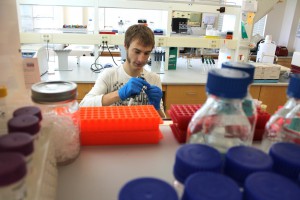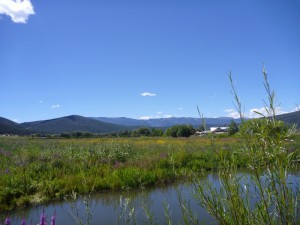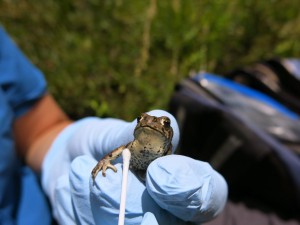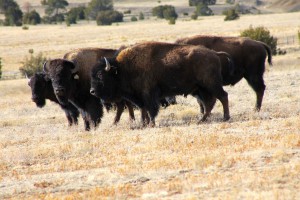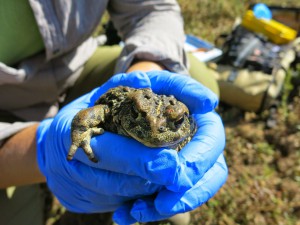
Justine García
Name: Justine Garcia, Ph.D.
Appointment: Assistant Professor
Email: jrgarcia@nmhu.edu
Office: HSCI 323
Office phone number: 505-454-3365
Zoom link: https://nmhu.zoom.us/my/drjustine
Expertise: Host-microbe interactions, microbiomes, microbial ecology and evolution, symbiosis
Education: Ph.D., Emory University, 2015
Dissertation Title: “Acquisition and maintenance of specific bacterial symbionts in vertical and horizontal symbioses”
B.S. & B.A., University of New Mexico, 2007
Professional Experience:
2019 – present: Assistant Professor, New Mexico Highlands University, Las Vegas, NM
2016 – 2017: Citizen Science Faculty, Bard College, Annandale-on-Hudson, NY
2015: Instructor, Washington University in St. Louis, St. Louis, MO
2015 – 2019: Postdoctoral Research Associate, Washington University in St. Louis, St. Louis, MO
2011 – 2014: NSF Graduate Research Fellow, Emory University, Atlanta, GA
2012: NSF East Asian and Pacific Summer Institute Fellow, AIST, Hokkaido, Japan
2010 – 2011: NIH Population Biology in Infectious Disease Fellow, Emory University, Atlanta, GA
Research Interests:
All organisms are colonized by microbes, though only by a small subset of the microbes to which they are exposed. What determines which microbes can colonize and live within an organism? My research addresses this question from an ecological and evolutionary perspective using two host systems: 1) Squash bugs (an agricultural pest) and other, closely-related true bugs, and 2) the model social amoeba, Dictyostelium discoideum. Both of these hosts acquire beneficial bacteria from the soil and I use microcosm studies, next-generation sequencing, and fitness assays to understand how those bacteria contact and colonize hosts when other bacteria cannot.
Selected Publications:
Garcia, J.R., Larsen, T. J., Queller, D, and Strassmann, J. 2019. Fitness costs and benefits vary for two facultative Burkholderia symbionts of the social amoeba, Dictyostelium discoideum. Ecology and Evolution 9: 9878.
Brock, D., Haselkorn, T., Garcia, J.R., Bashir, U., Douglas, T., Galloway, J., Brodie, F., Queller, D, and Strassmann, J. 2018. Diversity of free-living environmental bacteria and their interactions with a bactivorous amoeba. Frontiers in Cellular and Infection Microbiology 8: 411.
Laughton, A.M., Garcia, J.R., and Gerardo, N.M. 2016. Condition-dependent alteration of cellular immunity by secondary symbionts in the pea aphid, Acyrthosiphon pisum. Journal of Insect Physiology 86: 17-24.
Garcia, J.R., and Gerardo, N.M. 2014. The symbiont side of symbiosis: do microbes really benefit? Frontiers in Microbiology 5: 510.
Garcia, J.R., Laughton, A.M., Malik, Z., Parker, B.J., Trincot, C., Chiang, S., Chung, E., Gerardo, N.M. 2014. Partner associations across sympatric broad-headed bug species and their environmentally acquired bacterial symbionts. Molecular Ecology 23 (6): 1333 – 1347. Special Issue: Nature’s Microbiome
Laughton, A.M., Garcia, J.R., Altincicek, B., Strand, M.R. & Gerardo, N.M. 2011. Characterization of the immune responses in the pea aphid, Acyrthosiphon pisum. Journal of Insect Physiology 57 (6): 830-839.
Students Mentored:
Lee Estrada – Master’s Thesis Student, INBRE Fellow
Joaquin Lucero – Master’s Thesis Student
Anai Hernandez – Master’s Independent Study Student
Melina McDermott – AMP Undergraduate Research Scholar
Augustine Romero – INBRE Fellow
Steevi Heredia – INBRE Fellow
Samantha Ogata – AMP Prep Student
Grant Support:
Research Grant, NMHU Faculty Research Committee October 2019, $3850 Do hosts protect their symbionts from competition?
Experiential Learning Development Project Grant, New Mexico INBRE 2021, $39,000 Improving Biomedical Sciences at New Mexico Highlands University using CUREs and Bioinformatics Training (Co-PIs: Ian Williamson, Eric Griffin )
Return to Biology landing page

Eric Griffin
Name: Eric Griffin, Ph.D.
Appointment: Assistant Professor
Email: ericgriffin@nmhu.edu
Office: HSCI 325
Office phone number: 505-426-2067
Zoom link: https://nmhu.zoom.us/j/8126020915
Expertise: Plant ecology, community ecology, plant-microbe interactions
Education: Ph.D., University of Pittsburgh, 2016
Dissertation Title: “The greater unseen: on the identities, distributions, and impacts of foliar bacteria on tropical arboreal species”
B.S., Berry College, 2008
Professional Experience:
2019 – present: Assistant Professor, New Mexico Highlands University, Las Vegas, NM
2019 – present: Research Associate, Smithsonian Institution, Washington, D.C.
2018 – 2019: Instructor: Anne Arundel Community College, Arnold, MD
2018: Instructor: University of Pittsburgh, Pittsburgh, PA
2017 – 2019: Secretary’s Distinguished Postdoctoral Research Fellow: Smithsonian Institution, Washington, D.C.
2016 – 2017: Postdoctoral Research Fellow, Smithsonian Environmental Research Center, Edgewater, MD
2014 – 2016: Graduate Fellow, University of Pittsburgh, Pittsburgh, PA
2013 – 2014: Predoctoral Research Fellow, Smithsonian Tropical Research Institute, Panama
2010 – 2013: National Science Foundation Graduate Research Fellow, University of Pittsburgh, Pittsburgh, PA
2009 – 2010: First Year Graduate Fellow, University of Pittsburgh, Pittsburgh, PA
Research Interests:
I am an ecologist interested in experimental and empirical tests of theory in community ecology, specifically theories that address the mechanisms generating community composition, coexistence, and the maintenance of plant and microbial diversity. Specifically, I conduct laboratory, field, and greenhouse experiments to evaluate the effects of fungi and bacterial communities on plant hosts, and how these interactions may build up to mediate plant communities as well as ecosystem processes at larger scales.
Selected Publications:
Harrison, J. G., E. A. Griffin. 2020. The diversity and distribution of endophytes across biomes, plant phylogeny, and host tissues: how far have we come and where do we go from here? Environmental Microbiology 22: 2107-2123.
Griffin, E. A., J. G. Harrison, M. M. McCormick, K. T. Burghardt, J. D. Parker. 2019. Tree diversity reduces fungal endophyte richness and diversity in a large-scale forest experiment. Diversity 11: 234. Special Issue: symbioses and the biodiversity-ecosystem function relationship.
Media attention:
New Mexico Highlands University front-page article, January 31, 2020 entitled: “Biology Prof’s Paper – Sheds Light on Tree Diversity and Pathogen Resilience.”
Focus of piece in Albuquerque Journal on February 8, 2020 entitled “Little Things Make Big Difference in Plant Biology” by Margaret McKinney
Griffin, E. A., S. W. Kembel, A. A. Carrell, S. J. Wright & W. P. Carson. 2019. Soil macronutrients and plant host identity explain little variation in sapling endophyte community composition: disturbance as an alternative explanation? Journal of Ecology 107: 1876-1889.
Media attention:
https://jecologyblog.com/2019/04/02/foliar-bacterial-endophytes-in-a-tropical-forest/
https://jecologyblog.com/2020/06/23/harper-prize-shortlist-2019-eric-a-griffin/
Shortlisted for the Harper Prize for Early Career Researchers, March, 2020
Highlighted in the President’s Weekly Update, New Mexico Highlands University, 8/23/19
Griffin, E. A & W. P. Carson. 2018. Tropical tree endophytes: cryptic drivers of forest diversity, species composition, and ecosystem function. In Pirttila, A. M. & Frank, A. C., eds. Endophytes of Forest Trees: Biology and Applications, 2nd Ed. Springer. Pp. 63-103.
* Invited author of book chapter
S. J. Wright, B. L. Turner, J. B. Yavitt, K. E. Harms, M. Kaspari, J. Bujan, E. A. Griffin, J. Mayor, S. Pasquini, M. Sheldrake & E. V. J. Tanner. 2018. Limited plant responses to fertilization experiments in lowland, species-rich, tropical forests. Ecology 99: 1129-1138.
Griffin, E. A., S. J. Wright, P. J. Morin & W. P. Carson. 2017. Pervasive interactions between foliar microbes and soil nutrients mediate leaf production and herbivore damage in a tropical forest. New Phytologist 216: 99-112.
Griffin, E. A., M. B. Traw, P. J. Morin, J. N. Pruitt, S. J. Wright & W. P. Carson. 2016.
Foliar bacteria and soil fertility mediate seedling performance: a new and cryptic dimension of niche differentiation. Ecology 97: 2998-3008.
* Nominated for the Organization for Tropical Studies Outstanding Student Paper Award
Griffin, E. A. & W. P. Carson. 2015. The ecology and natural history of foliar bacteria with a focus on tropical forests and agroecosystems. The Botanical Review 81: 105-149.
Griffin, E. A., R. Bendis, N. Brouwer, J. Hua, M. Koski, G. Meindl & W. P. Carson. 2011. Review of the book Tropical Rain Forest Ecology, Diversity, and Conservation by Ghazoul, J., & D. Sheil. Plant Science Bulletin 57 (2): 71-73.
Professional Affiliations:
Ecological Society of America, 2010 – present
Sigma Xi, 2009 – present
Organization of Tropical Biology and Conservation, 2011 – present
National Association of Biology Teachers, 2014 – present
Environmental Education Association of New Mexico, 2019 – present
Return to Biology landing page
 Name: Carol Cutler Linder, Ph.D.
Name: Carol Cutler Linder, Ph.D.
Appointment: Sherman Fairchild STEM Curriculum Developer and Visiting Associate Professor
Email: clinder@nmhu.edu
Office: HSCI 134
Office phone number: 505-426-2118
Cell phone number: 505-429-2139
Zoom link: https://nmhu.zoom.us/my/carollinder
Expertise: Cell and developmental biology, genetics, STEM education teaching strategies
Education
M.B.A.: New Mexico Highlands University, Las Vegas, NM, expected completion May, 2021.
Ph.D.: The University of Texas at Austin, 1990, Biological Sciences – Zoology
M.A. (thesis): The University of Texas at Austin, 1985, Physical and Health Education
B.S.: University of New Mexico, 1982, Exercise Technology
Relevant Professional Experience
NM Highlands University, Las Vegas NM 2019 – present:
Visiting Associate Professor of Biology
2014 – 2018: Professor of Cell Biology
2009 – 2014: Associate Professor of Cell Biology
2004 – 2009: Assistant Professor of Cell Biology
The Jackson Laboratory, Bar Harbor ME
1994 – 2005: Associate Research Scientist
2002 – 2004: Associate Director of Genetic Resources
2000 – 2002: Senior New Models Development Scientist
1998 – 2000: Senior Technical Information Scientist
1994 – 1998: Manager, Technical Services/Technical Services Adviser
Research Interests
STEM education, modeling and mentoring best practices, cell and developmental biology, regulation of sperm development, mouse genetics, models for human diseases, regulation of gene expression
Professional Affiliations and Recognition
2016 – present: American Association of University Women
1985 – present: Phi Kappa Phi
2005 – present: Sigma Xi Scientific Research Society
2020– present: National Society of Leadership and Success, Sigma Alpha Pi (Spring, 2020)
2016: New Mexico Network for Women in Science and Engineering (NMNWSE) IMPACT! Award
2015: Excellence in Teaching Award, National Society of Leadership and Success
2008: Outstanding Service Award, New Mexico Highlands University
2005: Community Award, Alzheimer Research Forum
Selected Publications (of 32)
Bentson LF, Agbor, VA, Lopez, AC, Nfonsam, L, Agbor, NL, Bornstein, SA, Handel MA, Linder CC. 2013. New point mutation in Golga3 causes multiple defects in spermatogenesis. Andrology 1, 440–450.
Linder, CC. 2012. Applying Mouse Genetics Expertise to Research. Lab Animal 41(5):135.
Linder CC and Davisson, MT. 2012. Historical Foundations. In: The Laboratory Mouse, 2nd Edition , edited by Hans J. Hedrich. Elsevier Science, London, UK . pp 19-36.
Lutz C, Linder CC, Davisson, MT. 2012. Strains, Stocks, and Mutant Mice. In: The Laboratory Mouse, 2nd Edition , edited by Hans J. Hedrich. Elsevier Science, London, UK , pp 37-.50.
Linder CC. 2006. Genetic variables that affect phenotype. ILAR Journal, 47:132-140.
Linder CC, Davisson MT. 2004. Strains, Stocks, and Mutant Mice. In: Laboratory Mouse, Handbook of Experimental Animals Series, Hedrich HJ, Bullock G, Petrusz P (eds.), Elsevier Science, London, UK, pp 25-44.
Linder CC. 2001. The influence of genetic background on spontaneous and genetically engineered mouse models of complex diseases. Lab Animal 30:34-39.
Simpson EM, Linder CC, Sargent EE, Davisson MT, Mobraaten LE, Sharp JJ. 1997. Genetic variation among 129 substrains is problematic for targeted mutagenesis in mice. Nat Genet 16:19-27.
Linder CC, Heckert LL, Goetz TL, and Griswold MD. 1995. The molecular biology of the FSH receptor. J Steroid Biochem Mol Biol 53:215-218.
Linder CC, Heckert LL, Goetz TL, Griswold MD. 1994. Follicle-stimulating hormone receptor gene promoter activity. Endocrine 2:957-966.
Linder CC, Griswold MD. 1993. Stage synchronization in rat seminiferous tubules using vitamin A depletion. In: Meth Repro Toxic Acad Press (Ed. Robert E. Chapin and Jerrold J. Heindel) 95-105.
Lillioja S, Young AA, Cutler CL, Ivy JL, Abbott WGH, Zawadski YJ, Christin L, Secomb TW, Bogardus C. 1987. Skeletal muscle capillary density and fiber type are possible determinants of in vivo insulin resistance in man. J Clin Invest 80:415-424.
Ivy JL, Sherman WM, Cutler CL, Katz AL. 1986. Exercise and diet reduce muscle insulin resistance in obese Zucker rats. Am J Physiol 251:E299-E305.
Selected Grant Support (of 21)
NSF NM-AMP Summer Community College Opportunity for Research Experience (SCCORE). $3,300 student stipends. Summer 2015. Role: Faculty Mentor. Students from Luna Community College.
ACS Project SEED (Linder, CC). $11,000. Understanding Male Infertility through Next Generation Sequencing. Summer 2015, Sum 2011 and 2012, GOLGA3 Protein Biochemistry. Role: Faculty Mentor. Students from Robertson HS, Las Vegas, NM.
8P20GM103451NIH/NIGMS NM-Idea Networks of Biomedical Research Excellence (formerly P20RR016480, NCRR). $75,000/yr. Jeffrey Arterburn (PI) NM State, 5 GOLGA3, a protein essential for spermatogenesis. Role: Subproject PI. 3/1/09 – 2/28/14 (no cost extension to 6/14/14).
NSF 09-508 NSF-RDE. Research in Disabilities Education STEM STARS. $100,000/yr. Mary Shaw and Stella Helvie (co-PIs), 1/1/2009 – 12/31/2011 Role: Collaborator.
F2011ur0024/F11UR016 NSF Western Alliance to Expand Student Opportunities. $1700/yr. Antonio Garcia (PD), Arizona State University. 2009 – 2011 Role: Faculty Mentor.
P520 MD001104, NIH/ NCMHD-Research Infracture in Minority Institutions. $75,000/yr. Rodolfo Martinez (PD) 12/28/07-8/31/09 repro27, a mouse model of male infertility. Role: Subproject PI.
P20 RR 016480 NM-Idea Networks of Biomedical Research Excellence. $100,000/yr. Jeff Arterburn (PI), NM State 9/1/2004 – 4/30/2009NIH/NCRR. Gene expression patterns during spermatogenesis. Role: Subproject PI.
Comprehensive curriculum vitae listing of all publications, presentations, and grants available upon request.
Return to Biology landing page
 Name: Sebastian Medina, Ph.D.
Name: Sebastian Medina, Ph.D.
Appointment: Assistant Professor
Email: SeMedina@nmhu.edu
Office: TBD
Office phone number: TBD
Zoom link: https://nmhu.zoom.us/j/7520692795
Expertise: Environmental health, Toxicology, Metals, Immunotoxicology, Hematotoxicology
Education:
Ph.D., Biomedical Sciences, conc. in Pharmaceutical Sciences, with distinction
University of New Mexico, 2019
Dissertation Title: Mechanisms of Arsenic-Induced Suppression of Early Red Blood Cell Development
B.S., Biology
New Mexico Highlands University, 2012
Professional Experience:
2020 – present: Assistant Professor, New Mexico Highlands University (NMHU), Las Vegas, NM
2019 – 2020: Postdoctoral Research Fellow, University of New Mexico (UNM) Health Sciences Center, Albuquerque, NM
2014 – 2019: Graduate Student/Research Assistant, UNM Health Sciences Center, Albuquerque, NM
2014 – 2020: National Institute of Environmental Health Sciences-Environmental Protection Agency UNM Metals Superfund Research Program Predoctoral and Postdoctoral Trainee
2016 – 2019: UNM Clinical & Translational Science Center Predoctoral Trainee
2009 – 2014: Water Chemistry Lab Assistant and Graduate Research Assistant, NMHU, Las Vegas, NM
Research Interests:
My research interests are in the toxicology of environmental metals and their impacts on human health. Specifically, I am interested in understanding mechanisms of metal-induced toxicity to hematopoietic stem and progenitor cells, including the hematotoxicity of inorganic and organic arsenicals. My other major research interests are in elucidating mechanisms of immune dysregulation produced by metal exposures.
Publications:
Medina, S., Lauer, F.L. Castillo, E.F., Bolt, A.M., Ali, A-M. S., Liu, K.J., Burchiel, S.W. (2020). Exposures to uranium and arsenic alter intraepithelial and innate immune cells in the small intestine of male and female mice. Toxicology and Applied Pharmacology 403:115155.
*Bolt, A.M., *Medina, S., Lauer, F.T., Liu, K.J., Burchiel, S.W. (2019). Minimal uranium immunotoxicity following a 60-day drinking water exposure to uranyl acetate in male and female C57BL/6J mice. Toxicology and Applied Pharmacology 372, 33-39. *Co-first authors
Bolt, A.M., Medina, S., Lauer, F.T., Xu, H., Ali, A.M., Liu, K.J., Burchiel, S.W. (2018). Minimal uranium accumulation in lymphoid tissues following an oral 60-day uranyl acetate exposure in male and female C57BL/6J mice. PLOS One 13,e0205211.
Medina, S., Xu, H., Wang, S.C., Lauer, F.T., Liu, K.J., Burchiel, S.W. (2017). Low level arsenite exposures suppress the development of bone marrow erythroid progenitors and result in anemia in adult male mice. Toxicology Letters 273, 106-111.
- Parvez, Medina, S., Santella, R.M., Islam, T., Lauer, F.T., Alam, N., Eunus, M., Rahman, M., Factor-Litvak, P., Ahsan, H., Graziano, J.H., Liu, K.J., Burchiel, S.W. (2017). Arsenic exposure alters clinical indicators of anemia in a male population of smokers and non-smokers in Bangladesh. Toxicology and Applied Pharmacology 331, 62-68.
Xu, H., Medina, S., Lauer, F.T., Douillet, C., Liu, K.J., Hudson, L.G., Styblo, M., Aleksunes, L.M., Burchiel, S.W. (2017). Efflux transporters regulate arsenite-induced genotoxicity in double negative and double positive T cells. Toxicological Sciences 158,1-13.
Xu, H., Medina, S., Lauer, F.T., Douillet, C., Liu, K.J., Styblo, M., Burchiel, S.W. (2017). Genotoxicity induced by monomethylarsonous acid (MMA+3) in mouse thymic developing T cells. Toxicology Letters 279,60-66.
Xu, H., McClain, S., Medina, S., Lauer, F.T., Liu, K.J., Hudson, L.G., Styblo, M., and Burchiel, S.W. (2016). Differential Sensitivities of Bone Marrow, Spleen and Thymus to Genotoxicity Induced by Environmentally Relevant Concentrations of Arsenite. Toxicology Letters 262, 55-61.
Ezeh, P.C., Xu, H., Wang, S., Medina, S., and Burchiel, S.W. (2015). Evaluation of toxicity in mouse bone marrow progenitor cells. Current Protocols in Toxicology.
Medina, S., Trujillo, J., Williams, D., Pilotti, M., and Martinez, E.A. (2012). Water quality dynamics of two headwater streams as indicated by variations in nutrient and other solute concentrations, physicochemical parameters, and discharge. New Mexico Journal of Science 46, 183-201.
Trujillo, J.A., Medina, S., Williams, D., Pilotti, M., and Martinez, E.A. (2012). Impact of micro temperature changes on dissolved organic carbon in high mountain streams. New Mexico Journal of Science 46, 203-216.
Professional Affiliations:
Adjunct Faculty, Department of Pharmaceutical Sciences, UNM Health Sciences Center, Albuquerque, NM
Mountain West Society of Toxicology, Postdoctoral Representative, 2020 to present
Society of Toxicology, 2014 to present
Mountain West Society of Toxicology, 2014 to present
Hispanic Organization of Toxicologists, 2015 to present
Society of Toxicology Graduate Leadership Committee, 2017 to 2018
Mountain West Society of Toxicology, Graduate Student Representative, 2016 to 2018
Return to Biology landing page
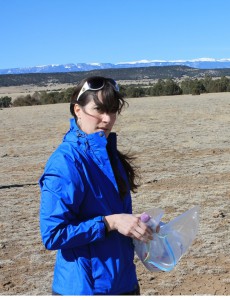
Sarah Corey-Rivas, Ph.D.
Associate Professor
Email: sjcorey@nmhu.edu
Research Interests: Conservation ecology of reptiles and amphibians, molecular ecology, landscape genetics, phylogeography, herpetology.
Website: http://nmhumolecularecology.weebly.com/
Master’s Students
- Eric Brown: Assessing the Genetic Landscape of the Boreal Toad within a Southern Rocky Mountain Watershed, Colorado.
- Lisa McBride: Metapopulation structure of two sympatric garter snake species (Thamnophis elegans and Thamnophis cyrtopsis) in the Mora watershed, New Mexico.
Courses Taught
- General Biology 1 & 2 for Majors (Biol 211 & Biol 212)
- Molecular Evolution & Ecology (Biol 4/589)
- Macroevolution (Biol 4/577)
- Ecological Genomics, Biol 620
- Ecology (Biol 389)
- Evolution (Biol 4/576)
- Capstone research (Biol 498)
- Advanced Ecology (Biol 689)
- Graduate Seminar (Biol 650)
- Research Ethics (Indp 692)
Relevant Publications
- Corey, S. J. (2010). Phylogenetic Signal of Threatening Processes among Hylids: The Need for Clade‐Level Conservation Planning. Diversity, 2, 142‐162.
- Waite, T. A., Corey, S. J., Campbell, L. G., Chhangani, A. K., Rice, J. & Robbins, P. (2009). Satellite sleuthing: Does remotely sensed land‐cover change signal ecological degradation in a protected area? Diversity and Distributions, 15, 299‐309.
- Corey, S. J. and T. A. Waite. (2008). Phylogenetic autocorrelation of extinction threat in globally imperiled amphibians. Diversity and Distributions, 14, 614‐629.
- Rivas, J. A. & Corey, S. J. (2008). Natural history note: Eunectes murinus (green anaconda). Longevity. Herpetological Review, 39, 469.
- H.L. Gibbs, S. Corey, G. Blouin‐Demers, K. Prior, & P.J. Weatherhead. (2006). Hybridization between mtDNA‐defined phylogeographic lineages of black ratsnakes (Pantherophis sp.). Molecular Ecology, 15, 3755‐3767.
